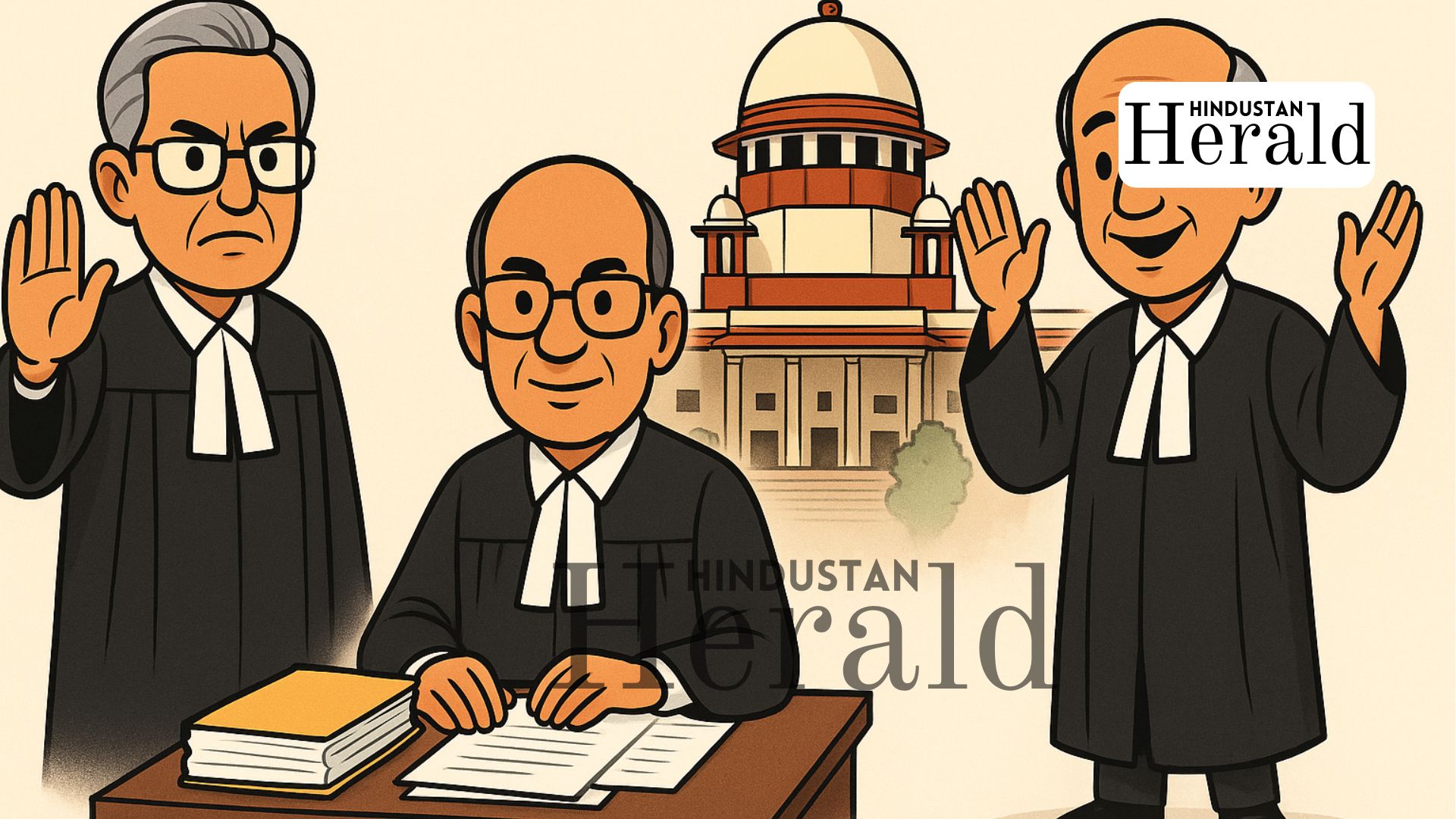New Delhi, September 16: The judiciary rarely makes headlines for a single reason. It is usually a cluster of developments, each pulling at a different corner of the justice system. Today was one of those days. The Supreme Court collegium pushed through fresh appointments, the court itself pulled up the government over the state of tribunals, and in Kolkata an outgoing Chief Justice left behind a blunt reminder of how heavy the burden of vacancies really is. Meanwhile, judges in the United States were busy with their own battles, one over the fate of asylum seekers and another over the political independence of the Federal Reserve.
Collegium Moves, But Backlog Lingers
At the center of the day was the Supreme Court Collegium, now under Chief Justice B. R. Gavai, which cleared recommendations for new judges across the Himachal Pradesh, Karnataka, Madras, and Tripura High Courts. On paper, it looks like routine housekeeping. In reality, it is an attempt to plug the gaping holes left by years of vacancies.
Appointments are the fuel without which the judicial engine cannot run. But anyone who has tracked this process knows the bottleneck does not end with the collegium. The Union government’s slow approval process has often left High Courts functioning at half strength, feeding directly into the mountain of pending cases. As one judge remarked not long ago, every vacancy left unfilled is another year of delay for litigants who may already have been waiting for decades.
Supreme Court’s Sharp Words On Tribunals
If that were not enough, the Supreme Court also delivered a stinging observation about India’s tribunals. These bodies were supposed to relieve High Courts by handling specialised disputes. Instead, many operate without even basic facilities, no proper offices, no residences, sometimes not even the staff a judge needs to function.
The court pointed out the obvious. Why would retired High Court judges, with decades of experience, agree to preside over tribunals that treat them like afterthoughts? If the government cannot provide the minimum dignity that the post deserves, the bench said, it would be better to abolish the system altogether and return those cases to the High Courts.
This is not a new complaint. Tribunals have long been accused of existing more in design than in reality. But the court’s words cut deeper this time, carrying the weight of exasperation. It is a warning shot at the Centre to fix the basics or stop pretending tribunals can deliver justice.
Kolkata CJ’s Farewell: A Reality Check
In Kolkata, Chief Justice T. S. Sivagnanam used his farewell speech to put hard numbers on the problem. The Calcutta High Court, he said, is working with 24 vacant seats, the fourth highest tally in the country. More than two lakh cases are pending.
He acknowledged that 17 names had already been recommended for appointment, but even if those come through, the backlog will not magically disappear. His words had the honesty of someone stepping away from the bench, unafraid to say out loud what every lawyer and litigant already knows. Indian courts are drowning, and unless vacancies are filled quickly and consistently, the tide will only rise.
Farewell speeches are often polite and ceremonial. This one was closer to a parting shot, a reminder that for all the reverence attached to the judiciary, the institution is still struggling under a basic shortage of people.
Across The Atlantic: Judges Grapple With Limits
The day’s judicial churn was not limited to India. In Washington, U.S. District Judge Tanya Chutkan told lawyers she was powerless to stop the deportation of several West Africans who claimed they faced persecution if returned home. The government has been sending them through Ghana, a practice that human rights lawyers say exposes them to fresh dangers.
Her ruling was not so much a dismissal of the migrants’ fears as it was an acknowledgment of the court’s limits. Immigration enforcement in the U.S. lies firmly within the executive’s hands. For those facing deportation, that distinction offers little comfort.
On the other side of the legal spectrum, a U.S. appeals court delivered a decision with far-reaching economic consequences by rejecting Donald Trump’s attempt to remove Federal Reserve Governor Lisa Cook. The judgment was less about Cook herself and more about reaffirming that the Fed cannot be bent to the will of whichever politician occupies the White House.
For global markets, including India’s, this was a reassuring note. In an era of volatile interest rates and unpredictable currency swings, the independence of the Fed is not a technicality. It is a cornerstone of stability.
The Thread That Connects
Taken together, these stories sketch the uneasy balance courts everywhere are trying to maintain. In India, judges are demanding resources and warning of collapse under vacancies. In the U.S., courts are drawing the line between judicial reach and political power.
The common thread is that judges, whether in Kolkata or Washington, are wrestling with both authority and constraint. They can protect independence, they can call out government failure, and they can preserve institutional integrity. But without the machinery of appointments, facilities, and political will, they too hit walls.
For Indians waiting on justice, the collegium’s latest recommendations are a sliver of hope. For the larger system, Justice Sivagnanam’s words linger as the more sobering truth. Unless the cycle of vacancies is broken, the courts will remain crowded halls of waiting rather than chambers of resolution.
Stay ahead with Hindustan Herald — bringing you trusted news, sharp analysis, and stories that matter across Politics, Business, Technology, Sports, Entertainment, Lifestyle, and more.
Connect with us on Facebook, Instagram, X (Twitter), LinkedIn, YouTube, and join our Telegram community @hindustanherald for real-time updates.
Covers Indian politics, governance, and policy developments with over a decade of experience in political reporting.






